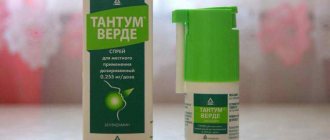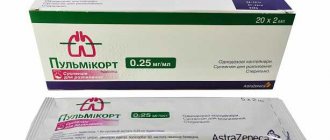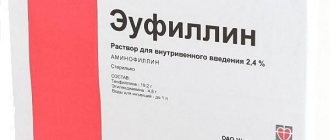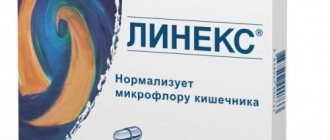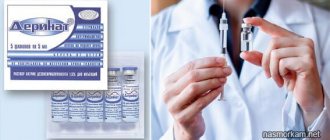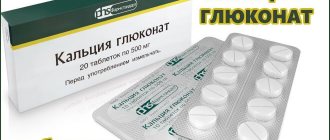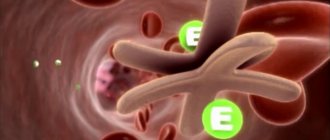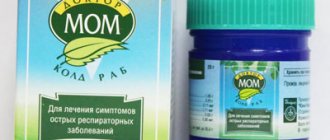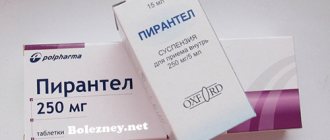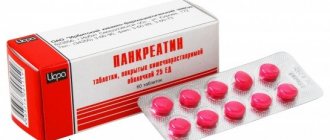Bacteriophages are specific viruses that selectively attack and infect microbes . By multiplying inside the cell, they destroy bacteria. In this case, pathogenic microflora is destroyed, and beneficial microflora is preserved.
The use of these viruses was proposed at the beginning of the century for the treatment of infectious diseases. However, interest in them in many countries of the world was lost after the advent of antibiotics. Today, interest in these viruses is returning.
In contact with
Instructions for use of “Staphylococcal bacteriophage”
“Staphylococcal Bacteriophage” collects only positive reviews. Let's take a closer look at the instructions for it.
Dosage form – solution for external and internal use.
Release form: 100, 50, and 20 ml in glass bottles, packed in a cardboard box of 1, 4, 10 pcs.
Ingredients: filtered lysate of pathogenic strains of staphylococcus, preservative quinone.
Description: colorless transparent or slightly colored liquid without sediment. It is an immunobiological drug.
This is confirmed by numerous reviews. “Staphylococcal bacteriophage” has the following effect on microbes and the human body. The phagocytes contained in the solution have the ability to differentiate bacteria and select microorganisms sensitive to the bacteriophage, causing their destruction, and multiply, generating new similar cells. Phagocytes do not have a destructive effect on the cells of the human body and do not cause them harm.
What are they used for?
Bacteriophages are used in the complex treatment and prevention of intestinal infections. Their use is advisable when:
- repeated episodes of intestinal infections;
- antibiotic resistance;
- allergic reactions to antimicrobial drugs;
- possible risk of severe systemic reactions;
- severe concomitant chronic pathology;
- young patient (up to 1 year).
The appropriateness of using a particular bacteriophage is determined by an infectious disease specialist or gastroenterologist.
To begin such a specific treatment, specific confirmation of the diagnosis of intestinal infection is necessary, that is, the detection of a pathogenic bacterium in the patient’s biological fluid. We recommend reading:
Enterobacteriaceae in a child’s stool: is it dangerous and how to treat it?
Application of the solution using an inhaler
A solution of staphylococcal bacteriophage can be used in a compressor inhaler. This method can be used for pharyngitis, tracheitis, bronchitis, pneumonia caused by staphylococcus.
How are inhalations of “Staphylococcal Bacteriophage” carried out?
A number of rules must be followed:
- the solution should be at room temperature (high temperature inactivates the drug);
- should be diluted in a 1:1 ratio with a sterile solution of sodium chloride 0.9%;
- It is necessary to maintain the cleanliness of the mask used and the inhaler chamber to prevent mixing of the bacteriophage with other substances that can cause inactivation of the drug.
Indications for use
For various purulent and inflammatory pathologies, it is recommended to use polyvalent bacteriophage for treatment. Reviews and instructions for the medicine warn patients that they take it only as prescribed by a specialist. Indications for prescription are the following pathological conditions:
- diseases of the ENT organs (tracheitis, bronchitis, otitis, tonsillitis, laryngitis);
- inflammatory processes in the genitourinary system (pyelonephritis, cystitis, colpitis, adnexitis, urethritis);
- skin diseases complicated by secondary bacterial infection;
- infections of the digestive tract (dysbacteriosis, cholecystitis);
- abscesses, burns, boils, carbuncles, phlegmon;
- ophthalmological pathologies (conjunctivitis, purulent infections).
A drug with a similar composition, complex bacteriophage, has the same indications for use. The instructions also allow it to be used to prevent infections after surgery. During the treatment period there is no need for additional use of probiotics. Pyobacteriophages are suitable for the treatment of indolent bacterial infections.
Price for this drug
So, the price for the drug “Staphylococcal Bacteriophage” varies by region: from 756 rubles. up to 1016 rub. for 100 ml, from 665 rub. up to 957 rub. for 4 bottles of 20 ml.
For example, in Tomsk 100 ml costs 756 rubles, and in St. Petersburg – 1016 rubles, in Moscow – 804 rubles, in Chelyabinsk – 786 rubles.
Thus, bacteriophages can rightfully be called a safe and effective means in the fight against pathogenic bacteria, which has a number of advantages over other drugs aimed at combating pathogens.
How to use?
The dosage required in a particular case is determined only by the attending physician. It will depend on the diagnosis and the age of the patient. The method of using the medicine also depends on the type of pathological process. For purulent-inflammatory diseases, the solution is indicated to be taken orally. Local use of the drug is possible in the form of irrigation, lotions and tampons. More effective is the complex use of a polyvalent bacteriophage.
To treat pathologies of the ENT organs, the product is used for rinsing and instillation of the nasal and ear cavities. A positive result is obtained by using turundas moistened with a solution. They are inserted into the ear canals with extreme caution so as not to damage the integrity of the eardrums. The procedure is repeated at least three times a day. For tonsillitis, the medication is used to rinse the mouth.
When treating diseases of the gastrointestinal tract, complex bacteriophage is taken orally. The patient is first advised to undergo a stool test, which will help determine the sensitivity of the pathogen to the active components. To treat inflammatory processes in the urinary system, a medicinal liquid is injected into the bladder using a catheter. To enhance the therapeutic effect, doctors can additionally prescribe bacteriophages in tablet form.
Related and recommended questions
I can’t recover from Enterococcus faecalis Elena Viktorovna! My name is Alena, age...
It bakes in the vagina immediately after ovulation. Yesterday there was ovulation, I understood it from the discharge, ...
Treatment of Klebsiella pneumonia Help prescribe treatment with bacteriophages. Passed the test...
Sowing and femoflor Please explain the situation, enterococcus was removed from the culture, and...
Moderate bacterial vaginosis I have the following problem. 2 months ago after an unprotected...
Vaginal swelling I have had vaginal swelling for 12 years, it appeared after taking medication...
Bacteria in the ears In the latest bacterial culture, enterophage spp 10 to degree 5 was found in the ears...
Staphylococcus aureus during pregnancy I have such an important question. While passing...
Streptococcus agalactia in a smear Dear gynecologists! Help me figure out...
Bleeding when taking Jess I started taking Jess, 11 active tablets. Started reception...
Help me decipher the Florocenosis analysis. Please help me with the interpretation of the results!…
Staphylococcus aureus, how to treat? My 1.5 month old daughter was hospitalized with a fever...
I really need a consultation about my dysplasia Doctor. In 2019, the body was diagnosed with endometriosis...
Smear culture The doctor plans to take a pipette biopsy of the endometrium. The smear culture has arrived...
Streptococcus in a 3-year-old child A 3-year-old child has been coughing since May, a frequent cough,…
Treatment of thrush in the 2nd trimester of pregnancy 37 weeks of pregnancy, from the 2nd trimester...
Unclear mucus from the vagina Doctor what could be the reason that after menstruation...
Further treatment tactics Doctor, please tell me what can be done in my…
Zithromax during pregnancy I arrived in the DR Congo on August 4, I do not have a vaccination against...
Streptococcus agalactia 10*8. Vulvovaginitis, urethritis. Temperature 37.5 for two months. There was severe discomfort. In the vagina (inflammation), only strep was found. Agalaktiya10*8, t was 38. G. said that it does not cause such inflammation (there are 100 leukocytes in the urine) and sent me to a urologist. They diagnosed me with urethritis, I took tavannik + terzhinan + derinat on a tampon.
special instructions
Before each use, the vial with the bacteriophage must be shaken and inspected. If there is cloudiness, the drug cannot be used. To avoid bacteria from the external environment entering the container, you should follow some rules:
- Wash your hands with special care.
- Treat the cap with an alcohol solution.
- Without opening the cork, remove the protective shell from it.
- If the cork does open, do not allow it to come into contact with the table surfaces. You can put it on a napkin soaked in alcohol.
- After use, you must keep the bottle closed.
When using small doses - from 2 to 8 drops, the drug must be taken from the bottle using a sterile syringe with a volume of 0.5-1 ml. There is no information about the possible effect of taking bacteriophage on the ability to drive vehicles or operate precision machinery. In retail pharmacy chains, the drug is dispensed without a doctor's prescription.
- What is Klebsiella pneumoniae - symptoms, diagnosis and treatment in children and adults
- How to treat Staphylococcus aureus in the throat with folk remedies and medications
- Group B streptococcus in children and adults - symptoms and routes of spread, diagnosis and treatment methods
Seven days of creation
Modern methods of synthetic biology make it possible not only to introduce various modifications into phage genomes, but also to create completely artificial active phages. Technologically, this is not difficult, you just need to synthesize the phage genome and introduce it into the bacterial cell, and there it will start all the processes necessary for the synthesis of proteins and the assembly of new phage particles. In modern laboratories this work will take only a few days.
Genetic modifications are used to change the specificity of phages and increase the effectiveness of their therapeutic effects. To do this, the most aggressive phages are equipped with recognition structures that bind them to the target bacteria. Also, genes encoding proteins that are toxic to bacteria and disrupt metabolism are additionally inserted into viral genomes—such phages are more lethal to bacteria.
Bacteria have several mechanisms of defense against antibiotics and bacteriophages, one of which is the destruction of viral genomes by restriction enzymes
, acting on specific nucleotide sequences. To increase the therapeutic activity of phages, due to the degeneracy of the genetic code, it is possible to “reformat” the sequences of their genes in such a way as to minimize the number of nucleotide sequences “sensitive” to enzymes, while simultaneously preserving their coding properties.
A universal way to protect bacteria from all external influences - so-called biofilms
, films of DNA, polysaccharides and proteins that bacteria create together and where neither antibiotics nor therapeutic proteins penetrate. Such biofilms are a headache for doctors, as they contribute to the destruction of tooth enamel, form on the surface of implants, catheters, artificial joints, as well as in the respiratory tract, on the surface of the skin, etc. To combat biofilms, special bacteriophages containing the gene , encoding a special lytic enzyme that destroys bacterial polymers.
Enzymes “from bacteriophage”
A large number of enzymes, now widely used in molecular biology and genetic engineering, were discovered as a result of research on bacteriophages.
The traditional cloning scheme (incorporation of foreign DNA) using a plasmid (an extrachromosomal genetic element inherent in many strains of bacteria) as a “vector” begins with cutting the plasmid DNA and cutting out the desired section of chromosomal DNA using a restriction enzyme. The DNA fragment being cloned is then inserted into a plasmid, which is introduced into the bacterium, making it capable of producing the foreign protein encoded in the inserted fragment.
One such example is restriction enzymes, a group of bacterial nucleases that digest DNA. Back in the early 1950s. It was found that bacteriophages isolated from the cells of one strain of bacteria often reproduce poorly in a closely related strain. The discovery of this phenomenon meant that bacteria had a system for suppressing the reproduction of viruses (Luria & Human, 1952). As a result, an enzymatic restriction-modification system was discovered, with the help of which bacteria destroyed foreign DNA that had entered the cell. The isolation of restriction enzymes (restriction endonucleases) gave molecular biologists an invaluable tool that allowed them to manipulate DNA: insert one sequence into another or cut out the necessary fragments of the chain, which ultimately led to the development of technology for creating recombinant DNA.
Another enzyme widely used in molecular biology is the DNA ligase of bacteriophage T4, which “crosslinks” the “sticky” and “blunt” ends of double-stranded DNA and RNA molecules. And recently, genetically modified versions of this enzyme with greater activity have appeared.
Most of the RNA ligases used in laboratory practice, which “cross-link” single-stranded RNA and DNA molecules, also originate from bacteriophages. In nature, they primarily serve to repair broken RNA molecules. Researchers most often use bacteriophage T4 RNA ligase, which can be used to “sew” single-stranded polynucleotides onto RNA molecules to label them. This technique is used to analyze the structure of RNA, search for binding sites of RNA with proteins, oligonucleotide synthesis, etc. Recently, thermostable RNA ligases isolated from bacteriophages rm378 and TS2126 have appeared among the routinely used enzymes (Nordberg Karlsson, et al., 2010; Hjorleifsdottir , 2014).
Some of another group of extremely important enzymes, polymerases, were also obtained from bacteriophages. For example, the very “precise” DNA polymerase of bacteriophage T7, which has found application in various fields of molecular biology, such as site-directed mutagenesis, but is mainly used to determine the primary structure of DNA.
Chemically modified phage T7 DNA polymerase was proposed as an ideal tool for DNA sequencing as early as 1987 (Tabor & Richardson, 1987). Modification of this polymerase has increased its efficiency several times: the rate of DNA polymerization reaches more than 300 nucleotides per second, so it can be used to amplify large DNA fragments. This enzyme became the precursor of sequenase, a genetically engineered enzyme optimized for DNA sequencing in the Sanger reaction. Sequenase is highly efficient and has the ability to incorporate nucleotide analogues into the DNA sequence, which are used to improve sequencing results.
The main RNA polymerases (DNA-dependent RNA polymerases) used in molecular biology - enzymes that catalyze the process of transcription (reading RNA copies from a DNA template) - also originate from bacteriophages. These include SP6, T7, and T3 RNA polymerases, named after the corresponding bacteriophages SP6, T7, and T3. All of these enzymes are used for the in vitro synthesis of antisense RNA transcripts, labeled RNA probes, etc.
The first completely sequenced DNA genome was the genome of phage φ174, over 5 thousand nucleotides in length (Sanger et al., 1977). This decoding was carried out by the group of English biochemist F. Sanger, the creator of the famous DNA sequencing method of the same name.
Polynucleotide kinases catalyze the transfer of a phosphate group from an ATP molecule to the 5′ end of a nucleic acid molecule, the exchange of 5′-phosphate groups, or the phosphorylation of the 3′ ends of mononucleotides. In laboratory practice, the most widely used polynucleotide kinase is bacteriophage T4. It is commonly used in experiments to label DNA with a radioactive isotope of phosphorus. Polynucleotide kinase is also used to find restriction sites, DNA and RNA fingerprinting, and synthesize substrates for DNA or RNA ligases.
In molecular biological experiments, bacteriophage enzymes such as phage T4 polynucleotide kinase, usually used for labeling DNA with a radioactive phosphorus isotope, DNA and RNA fingerprinting, etc., as well as enzymes that cleave DNA, which are used to obtain single-stranded DNA templates, are also widely used in molecular biological experiments. for sequencing and analysis of nucleotide polymorphism.
Using synthetic biology methods, it was possible to develop bacteriophages armed with the most sophisticated weapons that bacteria use against the phages themselves. We are talking about bacterial CRISPR-Cas systems, which are a complex of a nuclease enzyme that cleaves DNA and an RNA sequence that directs the action of this enzyme on a specific fragment of the viral genome. A piece of phage DNA, which the bacterium stores as a “memory” in a special gene, serves as a “pointer”. When a similar fragment is found inside a bacterium, this protein-nucleotide complex destroys it.
Having understood the mechanism of operation of CRISPR-Cas systems, the researchers tried to equip the phages themselves with similar “weapons”, for which purpose they introduced into their genome a complex of genes encoding a nuclease and addressing RNA sequences complementary to specific regions of the bacterial genome. The “target” may be genes responsible for multidrug resistance. The experiments were a complete success - such phages attacked the bacteria they were “tuned” to with great efficiency.
Analogs
Some drugs contain Pyobacteriophage. Analogs by international nonproprietary name are:
- Sextaphage is polyvalent - specifically dissolves pathogenic bacteria.
- Piopolyphage - lyses pathogenic bacterial cells, including enterococci.
- Polyvalent bacteriophage purified liquid - filtrate of viral bacteriophages.
- complex Pyobacteriophage combined liquid - destroys microbes without disturbing the natural balance of the body.
- Intesti-bacteriophage - has a specific effect on a number of bacterial strains.
Safety for newborns
A special feature of the drug is that it is approved for use in infants. The dosage is prescribed based on the child’s age:
- 5 milliliters - up to six months of age;
- 10 milliliters - up to 12 months of age;
- 15 milliliters - up to three years of age;
- 15 - 20 milliliters - if the child’s age is 3 - 8 years;
- 20 - 30 milliliters - this dosage is prescribed for children aged eight years and older.
If the rectal route is used for administration, the dosage is doubled, but the frequency of use can only be determined by a doctor, guided by the characteristics of individual tolerance, the underlying disease and the goals of therapy.
Phage display
Nowadays, bacteriophages are also widely used as simple systems for producing proteins with desired properties. We are talking about one developed in the 1980s. extremely effective molecular selection technique - phage display
. This term was proposed by the American J. Smith, who proved that, based on E. coli bacteriophages, it is possible to create a viable modified virus carrying a foreign protein on its surface. To do this, the corresponding gene is introduced into the phage genome, which is fused with the gene encoding one of the surface viral proteins. Such modified bacteriophages can be isolated from a mixture with wild-type phages due to the ability of the “foreign” protein to bind to specific antibodies (Smith, 1985).
Two important conclusions emerged from Smith's experiments: first, using recombinant DNA technology, it is possible to create hugely diverse populations of 106–1014 phage particles, each of which carries different protein variants on its surface. Such populations are called combinatorial phage libraries
. Secondly, by isolating a specific phage from a population (for example, one that has the ability to bind to a specific protein or organic molecule), this phage can be propagated in bacterial cells and an unlimited number of descendants with specified properties can be obtained.
Schematic diagram of the biopenning procedure—selection of highly specific recombinant antibodies to a specific target antigen from a combinatorial phage display library based on filamentous bacteriophages. From: (Tikunova, Morozova, 2009)
With the help of phage display, proteins are now produced that can selectively bind to therapeutic targets, for example, those exposed on the surface of the M13 phage, which are capable of recognizing and interacting with tumor cells. The role of these proteins in the phage particle is to “package” the nucleic acid, so they are well suited for creating gene therapy drugs, only in this case they form a particle with a therapeutic nucleic acid.
Today, there are two main areas of application of phage display. Peptide-based technology is used to study receptors and map antibody binding sites, create immunogens and nanovaccines, and map substrate binding sites of enzyme proteins. Technology based on proteins and protein domains - for selecting antibodies with specified properties, studying protein-ligand interactions, screening expressed fragments of complementary DNA and targeted modifications of proteins.
Using phage display, it is possible to introduce recognition groups into all types of surface viral proteins, as well as into the main protein that forms the body of the bacteriophage. By introducing peptides with specified properties into surface proteins, it is possible to obtain a whole range of valuable biotechnological products. For example, if this peptide imitates the protein of a dangerous virus or bacteria, recognized by the immune system, then such a modified bacteriophage is a vaccine that can be produced simply, quickly and safely.
If the terminal surface protein of the bacteriophage is “addressed” to cancer cells, and reporter groups (for example, fluorescent or magnetic) are attached to another surface protein, then a tool for detecting tumors will be obtained. And if a cytotoxic drug is also added to the particle (and modern bioorganic chemistry makes this easy to do), you will get a medicine that targets cancer cells.
One of the important applications of the phage protein display method is the creation of phage libraries of recombinant antibodies, where antigen-binding fragments of immunoglobulins are located on the surface of fd or M13 phage particles. Libraries of human antibodies are of particular interest, since such antibodies can be used in therapy without limitation. In recent years, about a dozen therapeutic antibodies constructed using this method have been sold on the US pharmaceutical market alone.
Weaknesses of such therapy
Bacteriophages, the types of which “work” only with “their” bacteria, are called: dysentery, staphylococcal, streptococcal, and so on. This feature is considered a disadvantage of beneficial viruses.
There is also a version, which, however, is only being tested, that bacteriophages destroy bacteria as long as there are many of them. As soon as the number of these microorganisms decreases, and there is no place for bacteriophages to multiply, they stop destroying pathogens, thereby regulating their number. Therefore, when treating with some drugs of this type, it is necessary to undergo repeated courses. However, they are indispensable in the treatment of purulent wounds, otitis media, runny nose, urological diseases, gastroenterocolitis and others. Thus, the biological product “Klebsiella polyvalent purified bacteriophage” has a high therapeutic effect. It kills dangerous Klebsiella bacteria that cause pneumonia, sepsis in infants and newborns, ENT diseases, gastrointestinal tract, omphalitis and other diseases. The drug is available in ampoules and vials. It is used externally, locally, internally, and is used for inhalation and rinsing.
Release form
The main form of release is a solution. It is packaged in 50 or 100 ml bottles in one box and 20 ml bottles in sets of 4, as shown in the photo. Other forms of release of the drug:
- tablets of 10, 25 or 50 pieces, packaged in cardboard packages;
- aerosol with a volume of 25 ml;
- ointment in bottles of 10 or 20 g;
- rectal suppositories, packed in 10 pieces.
Categories
AllergistAnesthesiologist-resuscitatorVenereologistGastroenterologistHematologistGeneticGynecologistHomeopathDermatologistPediatric gynecologistPediatric neurologistPediatric urologistPediatric surgeonPediatric endocrinologistNutrologistImmunologistInfectious disease specialistCardiologistCosmetologistSpeech therapistElorologistMammologistMedical lawyerNarcologistNeurologistNeurosurgeon NephrologistOncologistOncourologistOrthopedist-traumatologistOphthalmologistPediatricianPlastic surgeonProctologistPsychiatristPsychologistPulmonologistRheumatologistRadiologistSexologist-AndrologistDentistTherapistUrologistPharmacistPhytotherapistPhlebologistSurgeonEndocrinologist
"Counters" of bacteria
Bacteriophages serve not only as a versatile therapeutic and “disinfectant” agent, but also as a convenient and accurate analytical tool for a microbiologist. For example, due to their high specificity, they are natural analytical reagents for identifying bacteria of a certain type and strain.
In the simplest version of such a study, various diagnostic bacteriophages are added dropwise to a Petri dish with a nutrient medium seeded with a bacterial culture. If the bacterium turns out to be sensitive to the phage, then in this place of the bacterial “lawn” a “plaque” is formed - a transparent area with killed and lysed bacterial cells.
By analyzing the reproduction of phages in the presence of target bacteria, it is possible to quantify the number of the latter. Since the number of phage particles in a solution will increase in proportion to the number of bacterial cells contained in it, to estimate the number of bacteria it is enough to determine the titer of the bacteriophage.
The specificity and sensitivity of such an analytical reaction are quite high, and the procedures themselves are simple to perform and do not require complex equipment. It is important that diagnostic systems based on bacteriophages signal the presence of a living pathogen, while other methods, such as PCR and immunoanalytical methods, only indicate the presence of biopolymers belonging to this bacterium. This type of diagnostic methods is especially convenient for use in environmental studies, as well as in the food industry and agriculture.
reference species are used to identify and quantify different strains of microorganisms
phages.
Very fast, almost real-time analytical systems can be created based on genetically modified bacteriophages, which, when they enter a bacterial cell, trigger the synthesis of reporter fluorescent (or luminescent) proteins, such as luciferase
. When the necessary substrates are added to such a medium, a luminescent signal will appear in it, the value of which corresponds to the content of bacteria in the sample. Such “light-labeled” phages were developed to detect dangerous pathogens such as plague, anthrax, tuberculosis, and plant infections.
It is likely that with the help of modified phages it will be possible to solve a long-standing problem of global importance - to develop cheap and fast methods for detecting tuberculosis pathogens at an early stage of the disease. This task is very difficult, since the mycobacteria that cause tuberculosis are characterized by extremely slow growth when cultivated in laboratory conditions. Therefore, diagnosing the disease using traditional methods can be delayed for up to several weeks.
Phage technology makes this task easier. Its essence is that bacteriophage D29, which is capable of infecting a wide range of mycobacteria, is added to the blood samples being analyzed. The bacteriophages are then separated and the sample is mixed with a fast-growing, non-pathogenic culture of mycobacteria that is also sensitive to this bacteriophage. If the blood initially contained mycobacteria that were infected with phages, then the production of bacteriophage will also be observed in the new culture. In this way, single mycobacterial cells can be detected, and the diagnostic process itself is reduced from 2–3 weeks to 2–5 days (Swift & Rees, 2016).
